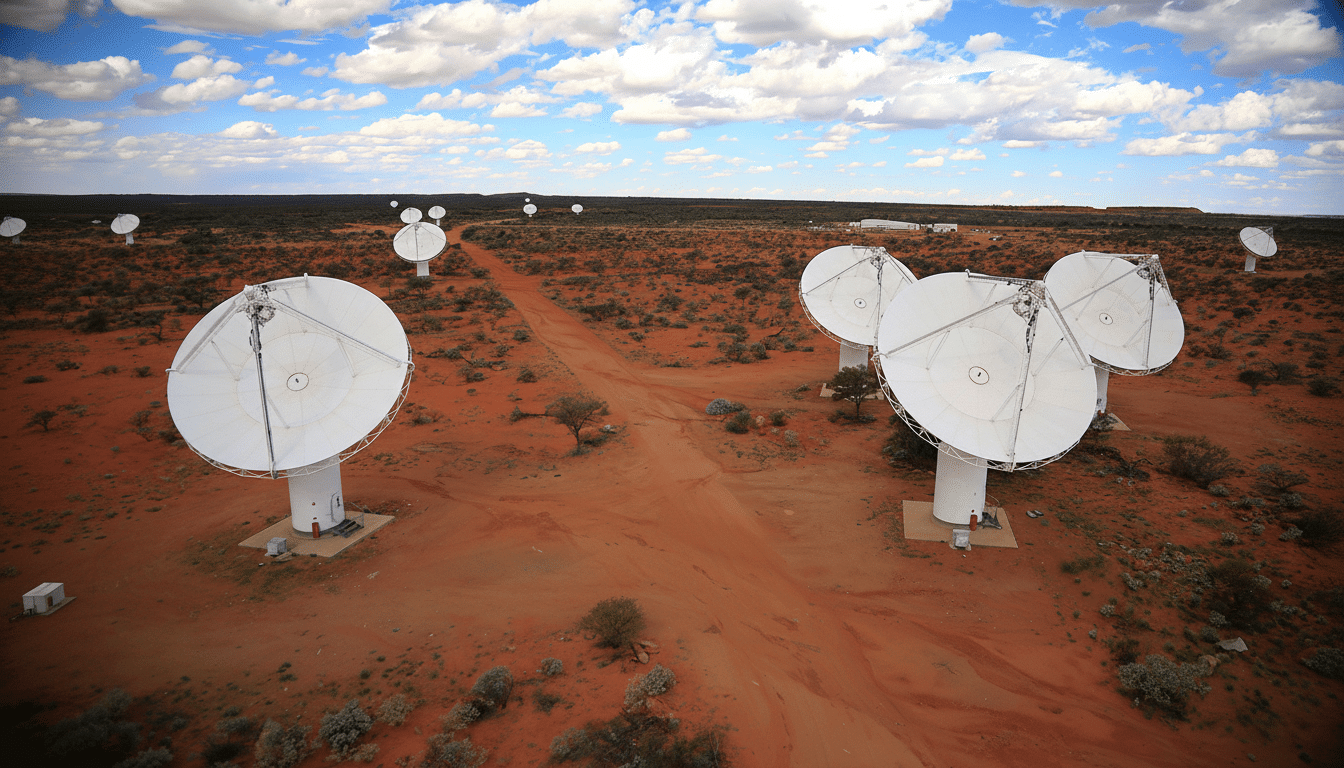Astronomers have found a faraway galaxy embedded in two enormous, overlapping rings of light from its own explosion. This structure is a member of an enigmatic and rare class of objects known as Odd Radio Circles, or ORCs, and initial analysis indicates it is by far the most distant such object ever discovered, as well as likely to be among the most luminous.
Each is about 300,000 light-years in diameter and both lie within an even larger radio cloud some 3 million light-years long. Visible only at radio wavelengths, these circles resemble ghostly smoke rings suspended in intergalactic space, far outstripping the Milky Way and suggesting enormous events in the galaxy’s past.

What are Odd Radio Circles and how do they form?
Odd Radio Circles, or ORCs, are diffuse, almost circular radio sources with a brighter ring around them and empty interiors. Their existence was first revealed in wide-field surveys carried out using new-generation radio arrays that can observe large chunks of the sky. Instruments like the Low Frequency Array (LOFAR) in Europe, the Australian Square Kilometre Array Pathfinder, and South Africa’s MeerKAT have all been essential in discovering this small but expanding catalog.
The origin is still uncertain, but most theories implicate violent outbursts from supermassive black holes or galaxy-scale winds. Jets or blasts from a central galaxy, when they crash into the tenuous gas that surrounds them, can produce shock fronts that accelerate electrons to near light speed. These particles shoot off along magnetic fields while emitting virtually imperceptible ringlike emissions of synchrotron radiation. A double-ring geometry, as in the new find, suggests a sequence of outbursts or intersecting shock waves.
Citizen science discovers the most distant known ORC
The find, led by volunteers collaborating in the RAD@home Astronomy Collaboratory, came from careful human-eye scans of deep radio maps where algorithms often overlook subtle and irregular patterns. Using LOFAR data, the team identified the source—listed as RAD J131346.9+500320—and claims it to be the furthest ORC and highest-brightness ORC known. Its light has taken billions of years to reach us, so we see the system when the universe was about half its current age.
Scientists explain two huge intersecting rings nestled within a wider, ultra-faint shell in the wake of this galaxy, a pattern that brings to mind overlapping shock waves. The research, which appears in Monthly Notices of the Royal Astronomical Society, suggests that powerful outflows from the gigantic black hole and intense star formation in the host galaxy may be driving a process of clumpy accretion in the galaxy’s core that is feeding material onto the black hole.
Two More Exotic Rings With The Same Sweep
In the same study, the team announced two more ringlike radio structures connected to giant radio galaxies. One system, RAD J122622.6+640622, extends a distance of almost 3 million light-years across. One of its jets suddenly takes a crooked turn and seems to puff out a separate ring about 100,000 light-years in diameter. The second case, RAD J142004.0+621715, stretches about 1.4 million light-years long and also reveals a ring sitting at the end of one jet and a small counterjet shooting off on the other side.

Together, the findings strengthen the notion that such rings are not unique oddities but members of a wider family of plasma structures moulded by black hole jets, galactic winds, and the environment around galaxies. They are rare snapshots of how energy being released from a galaxy remakes everything around it.
Why these rings matter for galaxy evolution studies
ORCs are natural laboratories for studying feedback — the back-and-forth between a galaxy and its surroundings that determines how galaxies grow, shut star formation down, and churn gas out. Their enormous scales mean that outflows can affect regions hundreds of thousands of light-years from a galaxy, extending much farther than a galaxy’s visible disk. By comparing the radio brightness of the rings at different frequencies, astronomers can infer particle lifetimes, shock speeds, and strengths of magnetic fields — effectively turning each ring into a time machine that records past eruptions.
The find, too, is a testament to the blossoming force of citizen science on the frontiers of research. Projects led by volunteers can shovel through enormous data sets equipped with a kind of pattern recognition that machine learning lacks, surfacing rare geometries that revise assumptions about the way black holes interact with the cosmic web.
What comes next in the hunt for odd radio circles
Follow-up observations with LOFAR, the upgraded GMRT, the VLA, and MeerKAT will allow detailed mapping of polarization as well as improved spectral indices, necessary parameters to test shock-acceleration models. Optical and infrared high-resolution imaging from large observatories can provide the host galaxy information, look for signs of mergers, and telltale signatures in star formation and black hole activity.
With the Square Kilometre Array beginning to see first light, astronomers anticipate that the ORC population will soon soar, leading to statistical analyses rather than one-offs. For the moment, these fresh new crossing bands of rings stand as a dramatic emblem of cosmic feedback, caught in lurid existence at tremendous distance and decoded through a collaboration between professional scientists and an alert public.

